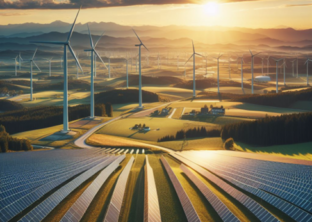Green methanol as the energy source of the future
In the production of green methanol, renewable energies are used to electrolytically generate hydrogen from water, which in turn is converted into methanol using CO2. The carbon for synthesizing the methanol is not supplied by fossil fuels, as in previous production, but by CO2 extracted from concentrated industrial flue gases. The fuel obtained can thus be used in a climate-neutral manner.
In Iceland, a plant for the production of renewable methanol was built several years ago, using electricity from a geothermal power plant to produce so-called Vulcanol. The first German test plant using the same technology is being built near Cologne. Methanol has clear advantages over hydrogen. Methanol is non-explosive and easy to store and transport. Like bioethanol, but with better properties, it can be mixed with gasoline or diesel. This makes it interesting as a fuel for heavy-duty transport, aviation and shipping. Existing bunker tanks of ships could be converted and further used with very little effort.

This development is triggered by requirements. In 2018, the International Maritime Organization (IMO) decreed that international shipping should become CO2 neutral by 2100. The situation is even more urgent in road transport. Here, the European Union has decided to reduce permissible emissions from trucks by 30 percent by 2030. Actually, it all boils down to methanol, although it has a lower energy yield overall. With methanol, the internal combustion engine could be retained, and a large part of the technical problems in dealing with methanol have already been solved. Methanol is already being produced in significant quantities on a large scale worldwide, but it is not CO2-neutral.
The task now is to convert production to CO2-neutral.

Doris Höflich, Market Intelligence Senior Expert
Sources:
- Cleanthinking, 14.09.202







